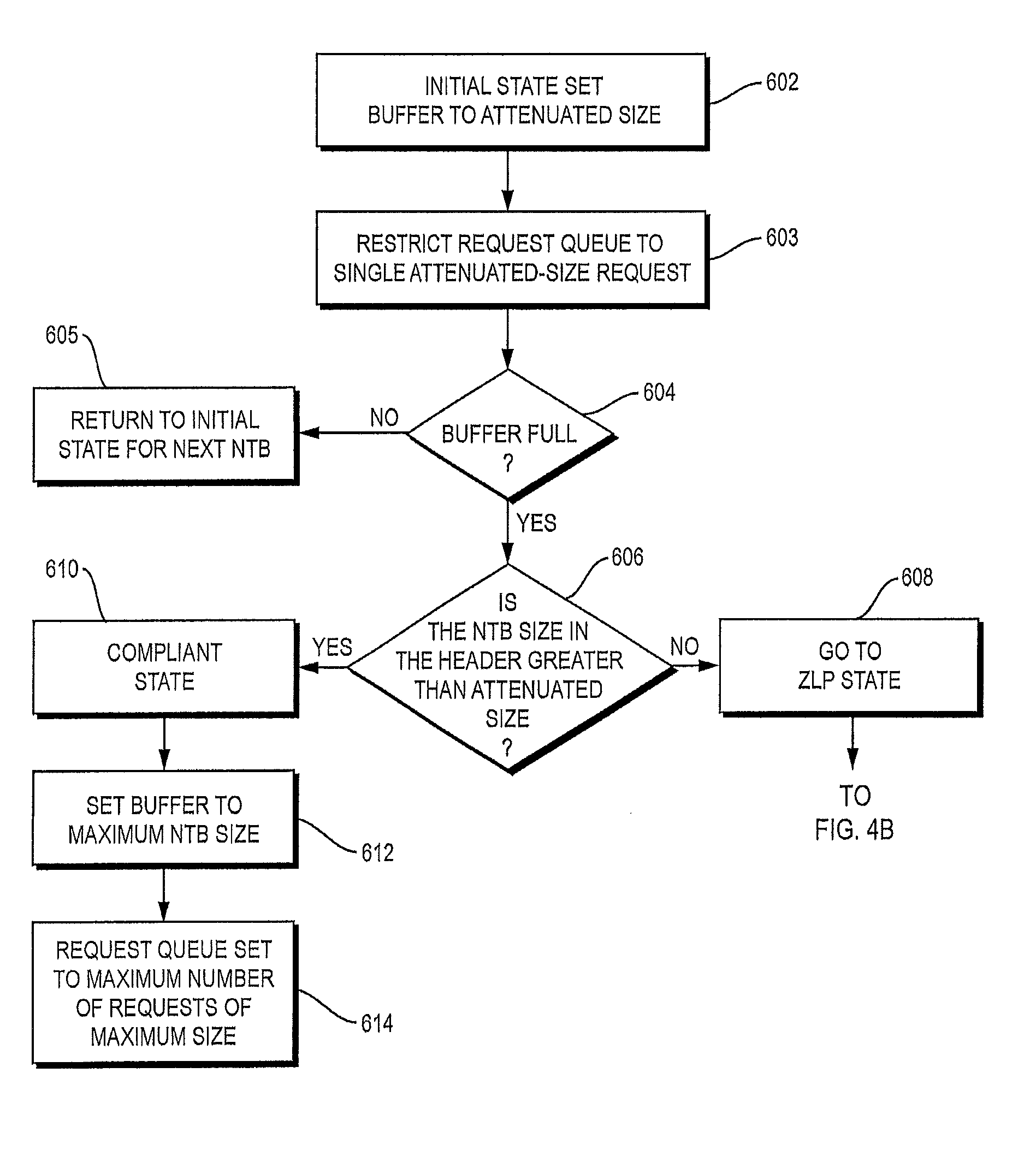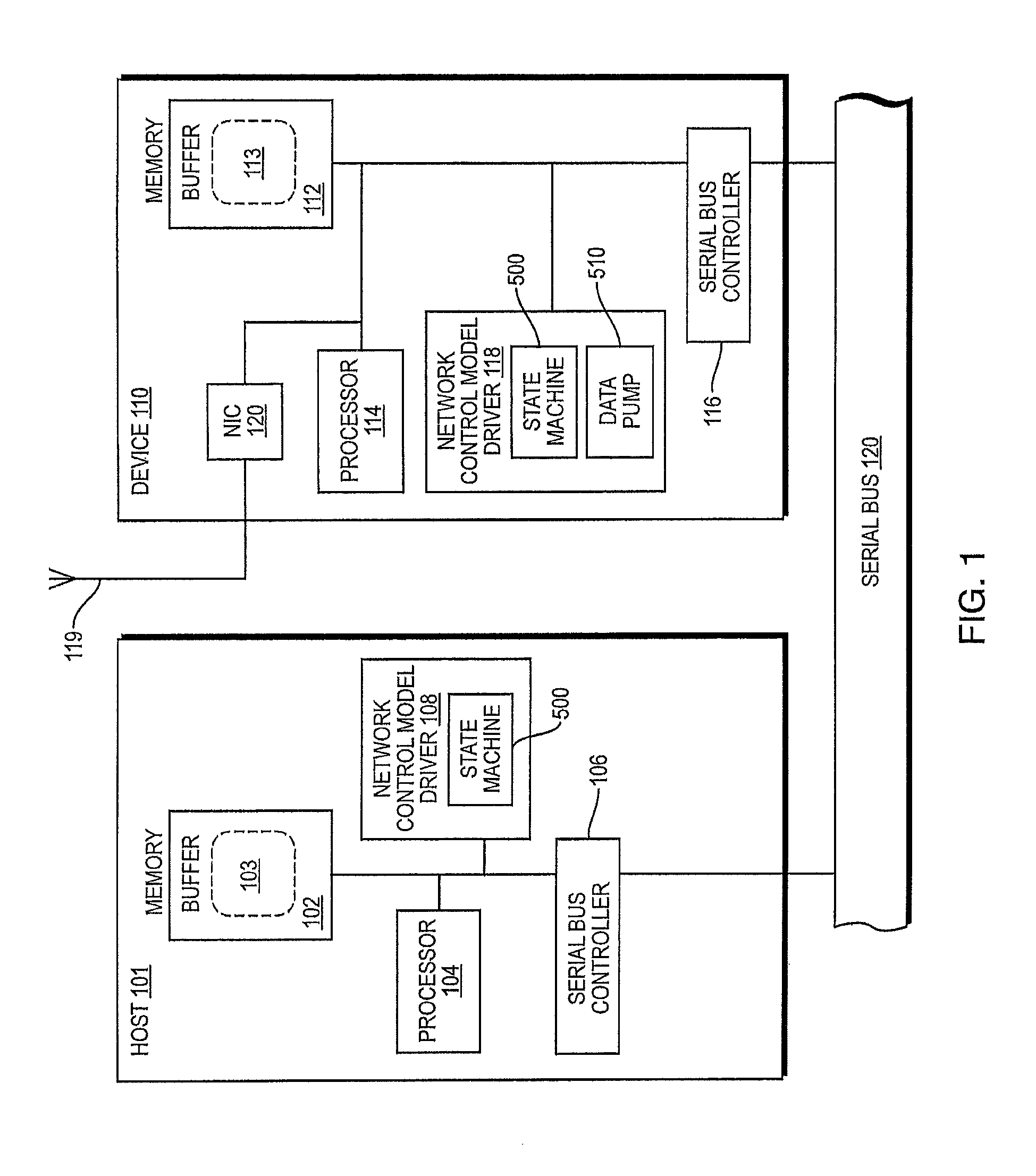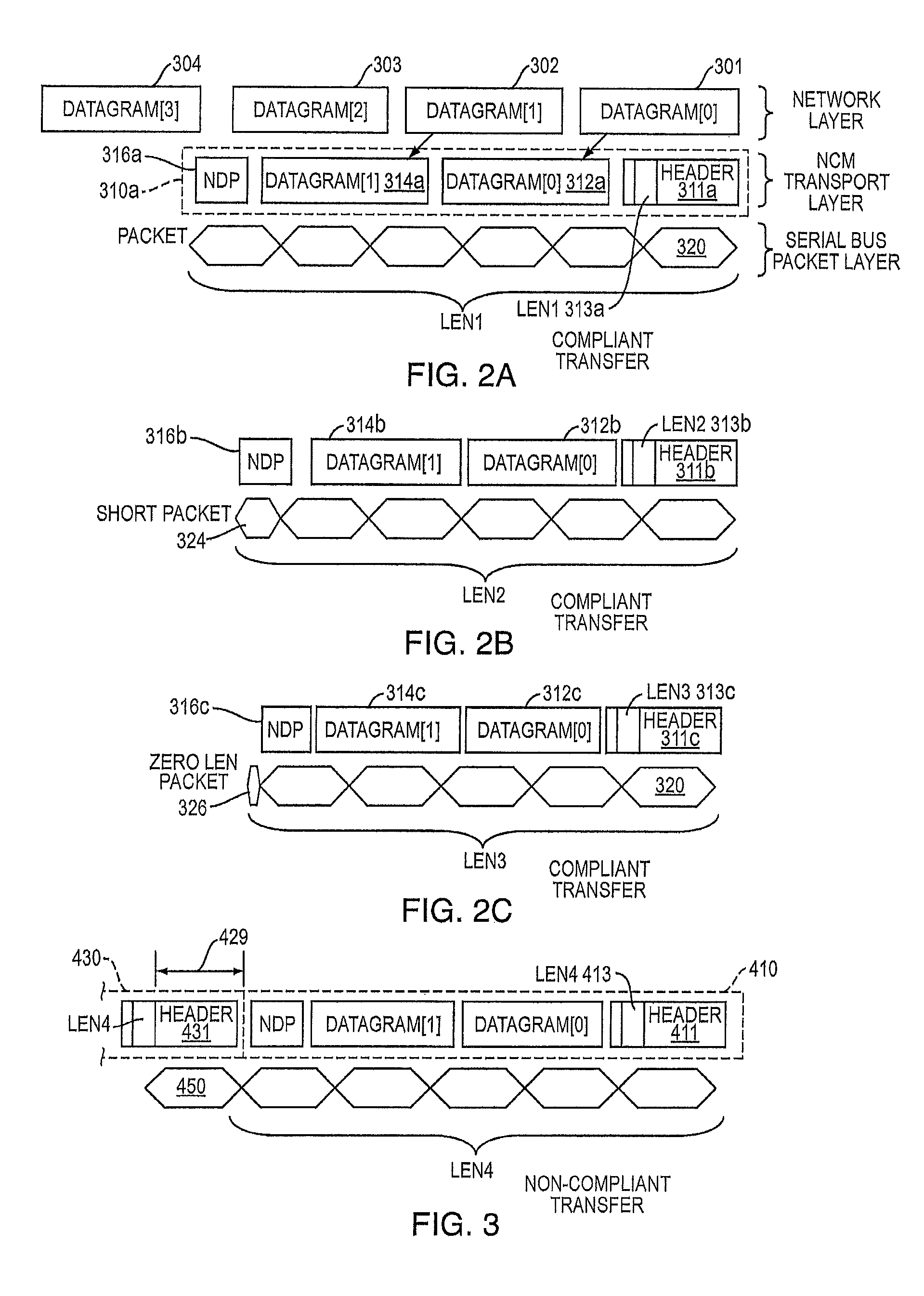Network control model driver
a network control and model technology, applied in the field of usb network class devices and hosts, can solve the problems of affecting the transacting device adversely, the receiver cannot be properly detected, and the loss of all embedded frames during this period, so as to maximize the data transfer rate and the request queue
- Summary
- Abstract
- Description
- Claims
- Application Information
AI Technical Summary
Benefits of technology
Problems solved by technology
Method used
Image
Examples
Embodiment Construction
[0018]Referring to FIG. 1, a host 101 communicates with one or more attached devices 110 over a serial bus 120. For ease of understanding, a host and one device are depicted in the drawing. However, multiple devices may be attached to the serial bus 120. The serial bus 120, in the example, is the USB 3.0 and communications between the host 101 and the device 110 over the bus are in accordance with transport protocols applicable to the USB 3.0. The transactions of interest are NCM Transfer Block (NTB) transactions and the device 110 is a network class device.
[0019]The host 101 includes a processor 104, a host memory 102, a host serial bus controller 106 and a host network control model driver 108 that operates with network and serial bus transport layers to transfer network data to the device 110 and receive network data from the device. The device 110 includes a processor 114, a device memory 112, a device serial bus controller 116, a device network control model driver 118, and a n...
PUM
 Login to View More
Login to View More Abstract
Description
Claims
Application Information
 Login to View More
Login to View More - R&D
- Intellectual Property
- Life Sciences
- Materials
- Tech Scout
- Unparalleled Data Quality
- Higher Quality Content
- 60% Fewer Hallucinations
Browse by: Latest US Patents, China's latest patents, Technical Efficacy Thesaurus, Application Domain, Technology Topic, Popular Technical Reports.
© 2025 PatSnap. All rights reserved.Legal|Privacy policy|Modern Slavery Act Transparency Statement|Sitemap|About US| Contact US: help@patsnap.com



